PLACES OF THE HEART
By:
December 29, 2022
One in a series of posts about Naples, by HILOBROW friend Wayne Chambliss.
BLOOD SIMPLE | MONMOUTH STRIKES AGAIN | LOVE’S LABOUR’S MISLAID | THE EXPERIMENTALIST | ALWAYS SOMEWHERE ELSE | ARE YOU A CHICKEN? | HAMMER OF THE GOTHS | PLACES OF THE HEART.
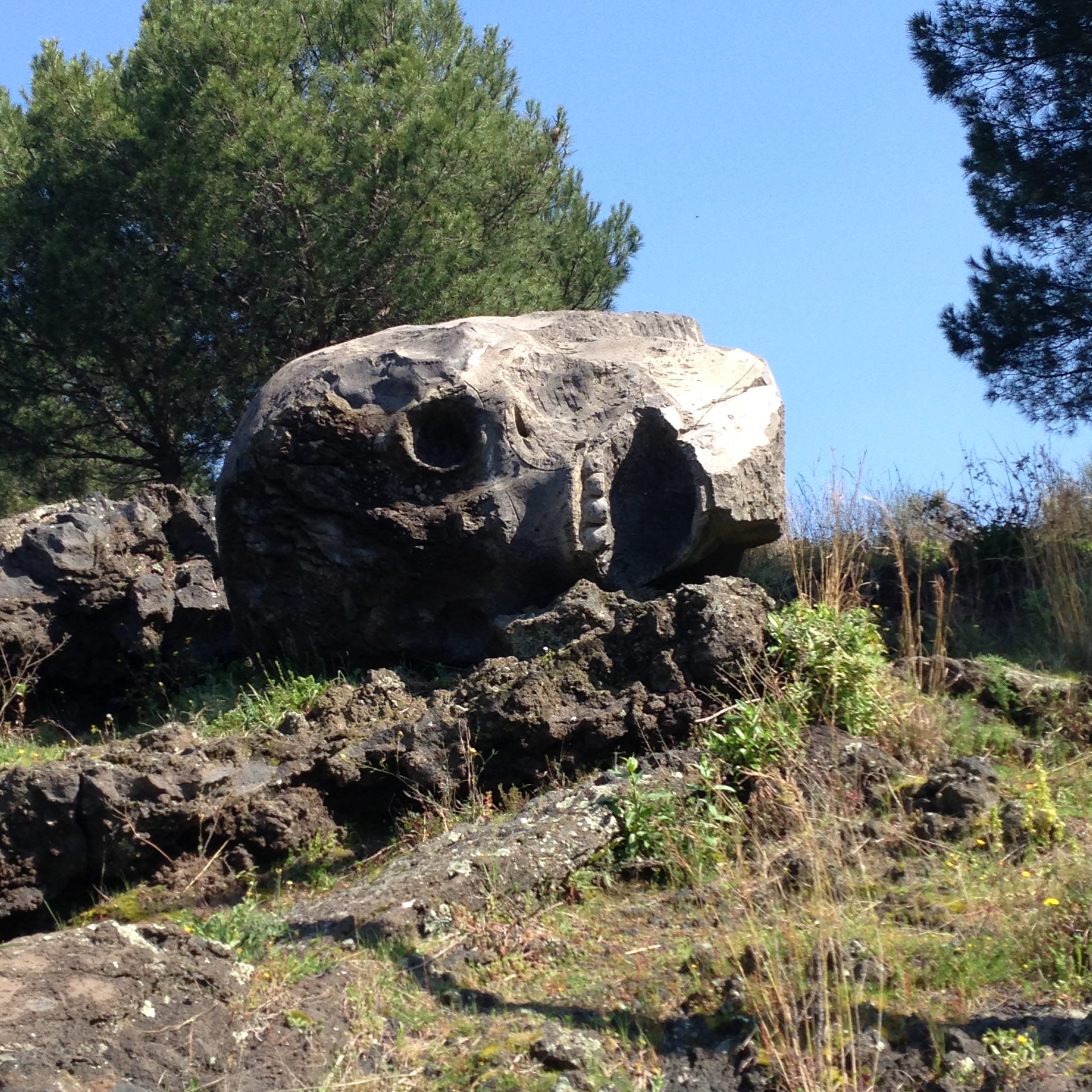
Let me tell you about a place I love.
The Campi Flegrei (or else, Phlegraean – i.e., Burning – Fields) is a volcanic caldera complex situated to the west of the urban core of Naples, Italy. The original crater – produced 40,000 years ago by the so-called “Campanian Ignimbrite eruption” (that may – or may not! – have created the environmental conditions in which modern humans replaced Neanderthals) – is approximately 13 km in diameter.
There are twenty-three younger craters circumscribed within it – half a dozen of them visible at the surface; the rest, drowned in the Gulf of Pozzuoli.
Beneath of all of this lies a quiescently active super volcano: the revenant Archiflegreo. Arguably the most dangerous volcano in the world, insofar as three million people live right on top of it.
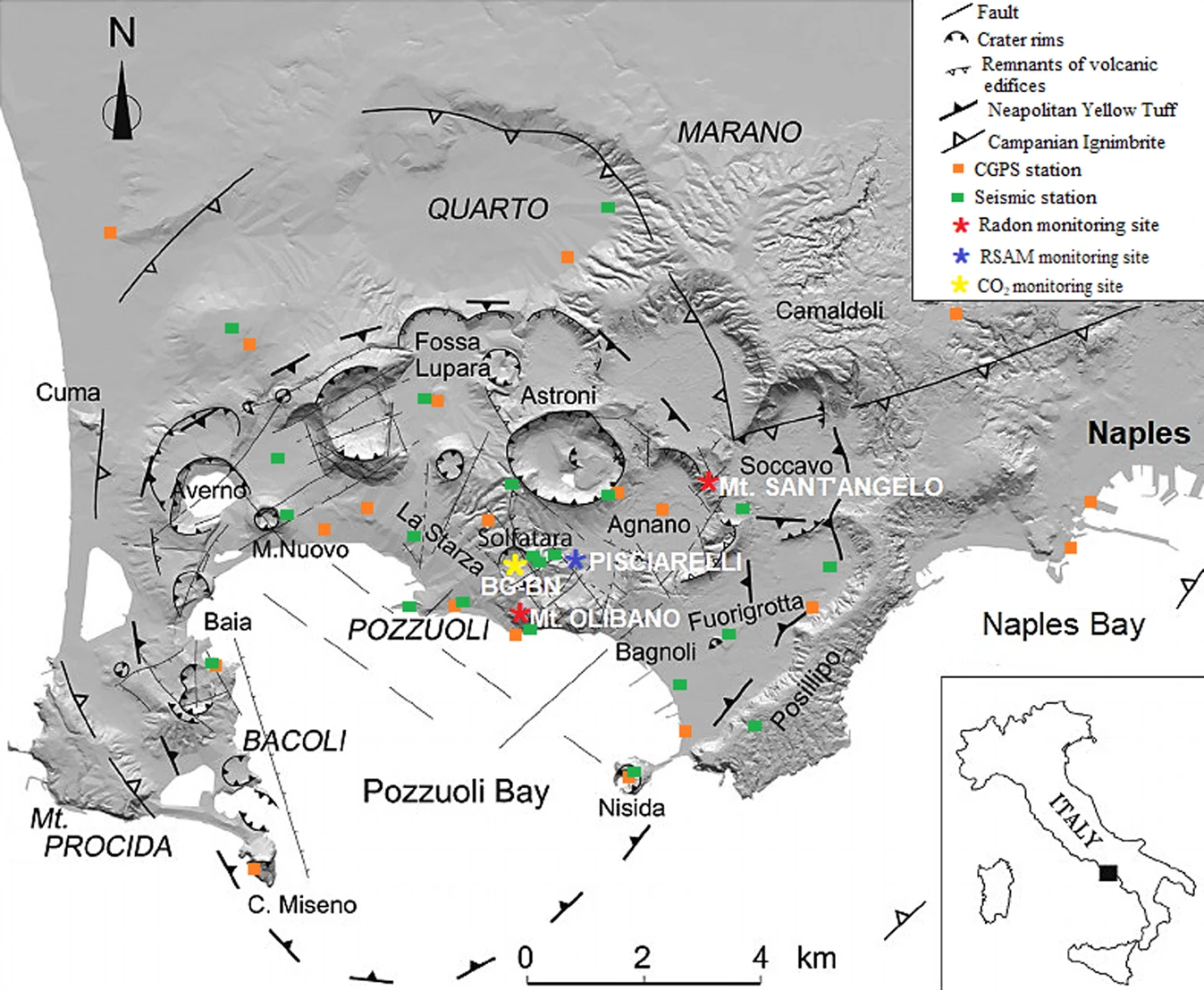
We can’t observe what’s happening down there directly, of course, but according to decades of seismologic, gravimetric, and tomographic models, intruding magma pools in a flat, wide reservoir ~1 km thick by 200 kilometers square at a depth of 10 km. From there, it gets pushed upward through trunk-line plumbing until it reaches a partially permeable cap-rock at depths of 4 to 2.3 km. Magmatic fluids percolate through this “seismic layer” into a shallower, blobular, lung-like chamber, where they mix with hydrothermals just two hundred meters below the surface.
These dynamics sometimes result in an earthquake; sometimes, as in the early 1980s, in such significant uplift of the area, so quickly, that tens of thousands of people get evacuated. Rarely, but within historical memory, they trigger an eruption – as when Monte Nuovo, the newest mountain in Europe, took form over the course of eight days in the autumn of 1538.
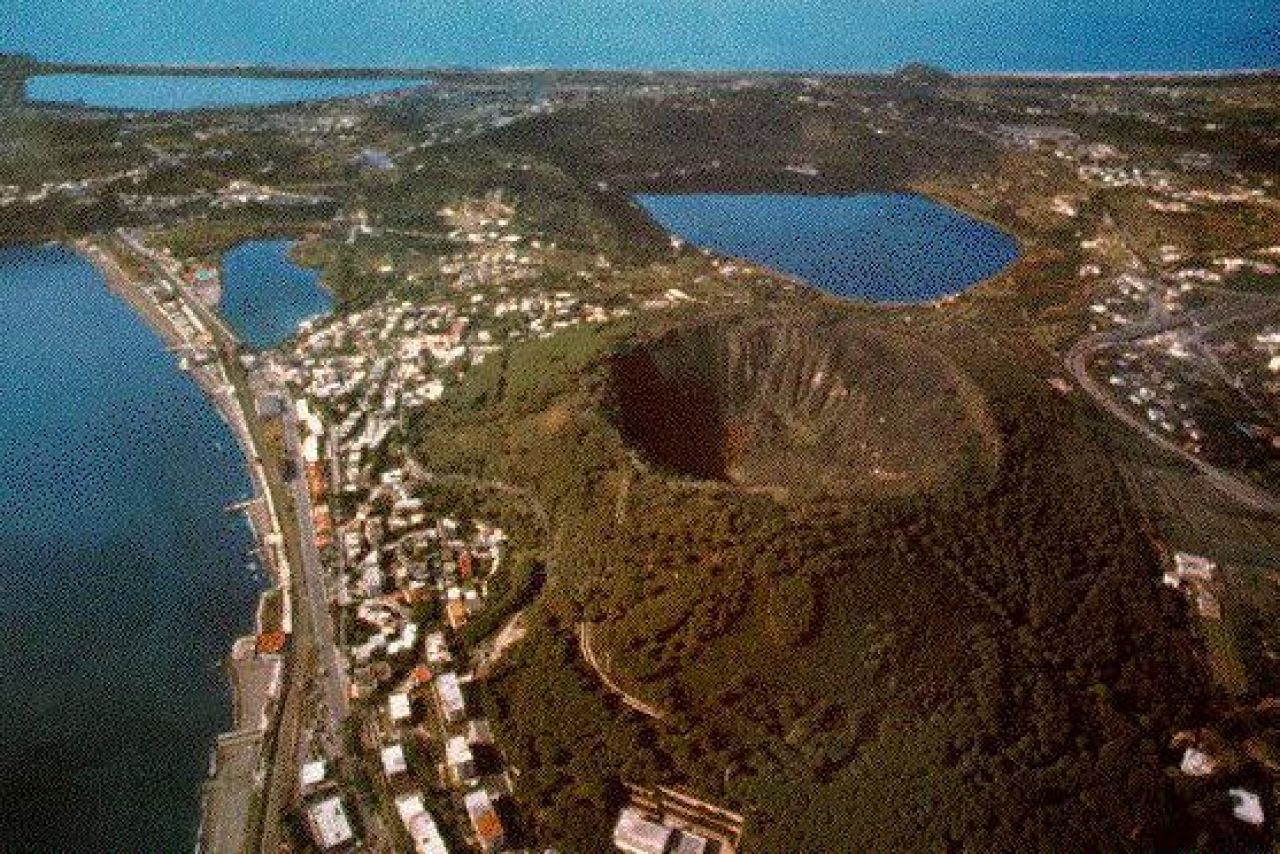
Corresponding to the otherwise occluded workings of the volcano below, the gravity field at the surface changes ceaselessly, measurably, as do its other geophysical characteristics. Its faultscape is progressively elaborated by seismic swarms. Hydrothermal slosh in the plumbing produces a characteristic long period, low frequency microseismic tremor. Strain at seismogenic depths produces intermittent electrical and thermal anomalies. The chemistry of the melts undergoes constant modification by addition and subtraction, like any proper stew: mush crystallization; fractional differentiation. Extrusions periodically overwrite whole sections of the crater. Bradyseism inundates coastal cities, thrusts up new land like Venus from the waves: terra nullius, if only momentarily.* The topography heaves. The earth steams. The air reeks of sulfur.
It’s an uncertain ground.
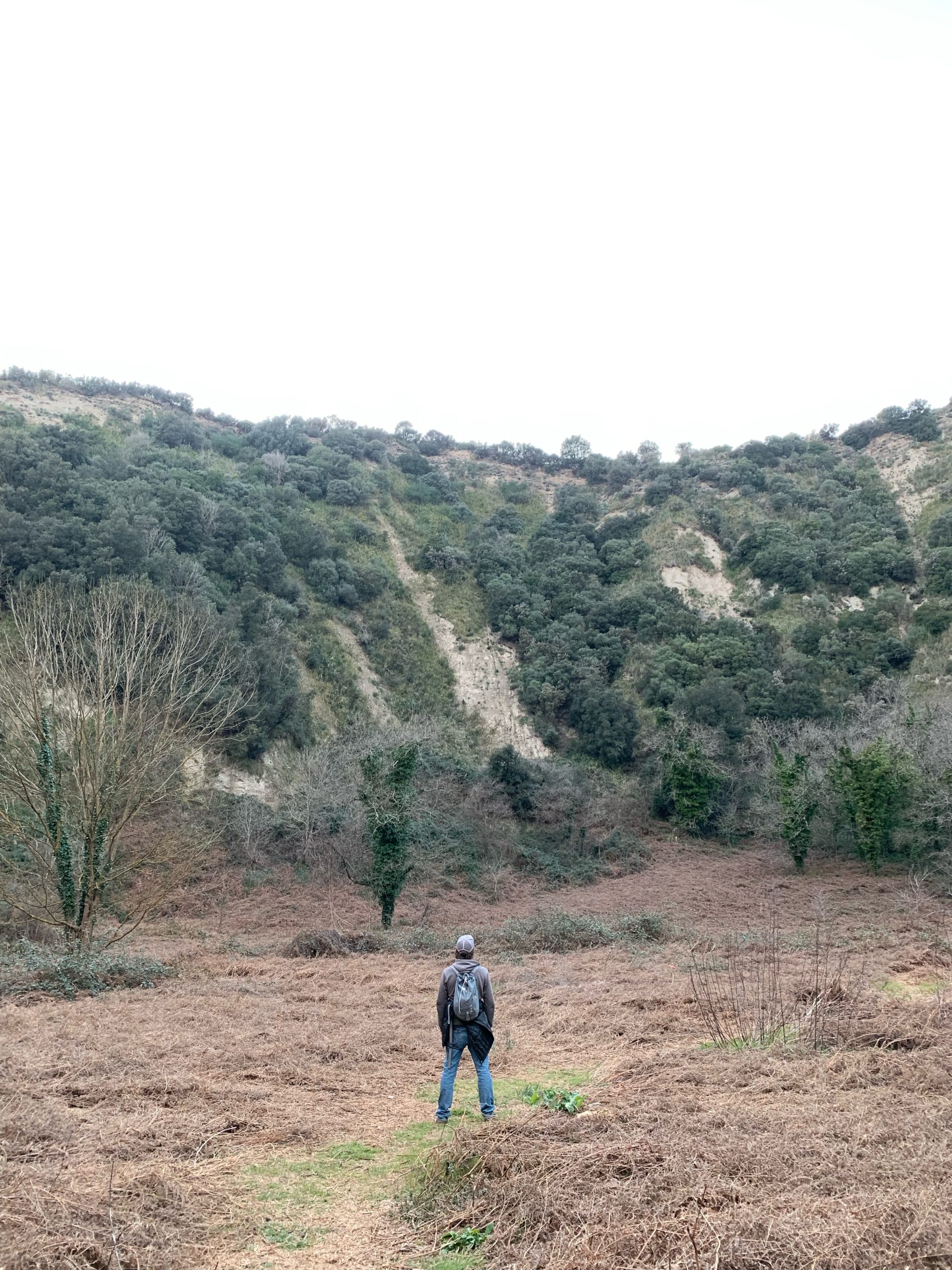
Tim Creswell has described ‘place’ as a “meaningful location”. I agree with that, to some extent, but can also see the need to re-think place to better account for how meaningfulness gets bound up — metaphysically — in the physical — geophysical — complexities that constitute and condition it. As Creswell has it, “place is also a way of seeing, knowing and understanding the world.” If so, place will, because it is meaningful, necessitate an epistemology, a theory of knowing — one that accounts for its knowability. That is, for its ground.
As new epistemologies of place emerge and accrete, previous ones persist – and not just as substrate, but in tangled hierarchies of knowing. What’s more, these accretions are continuously sinking, deforming, breaking up, melting, being made available for future ruptures – convectively.
Epistemology is analogous to geology in this sense, insofar as both the earth of “ground” and the ground of, say, “earth” are inherently stratigraphic. In both cases – as viewed through a hole – a whole past is presented.
Part of mine: I grew up inside this volcano on the edge of Naples, in sight of the classical entrance to Hell.**
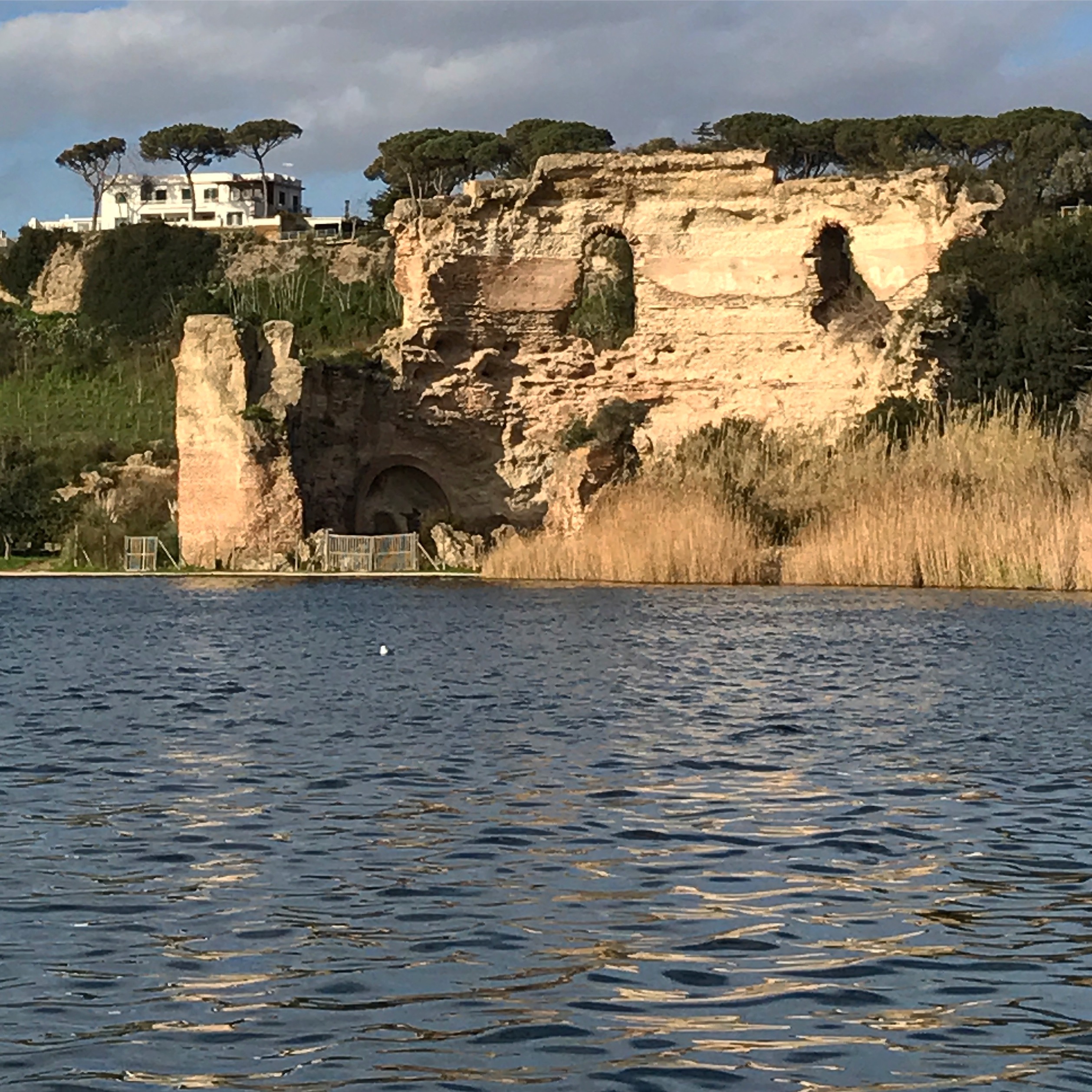
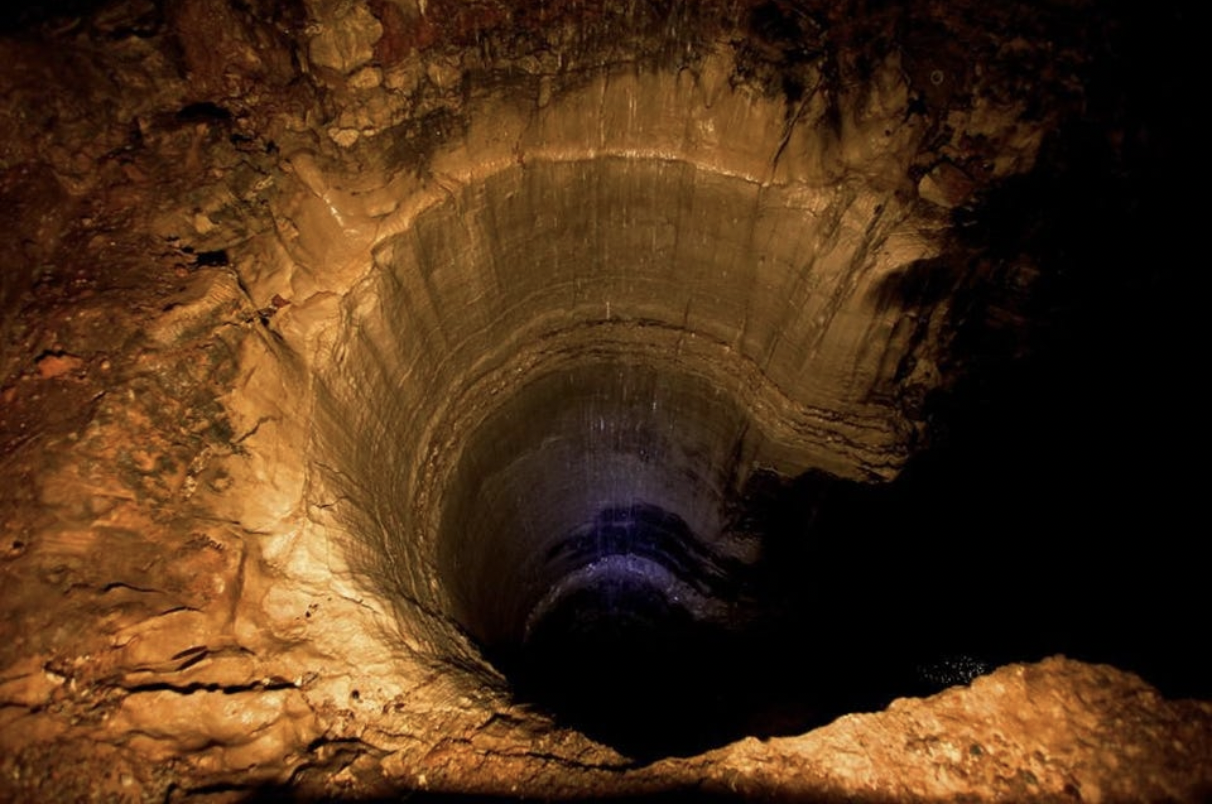
As the Sibyl of Cumae knew very well, there’s a hole in the ground of the Campi Flegrei. A big one, located below modern-day Lake Avernus — and supposedly accessible through a cave mouth on its shore.
For Greeks of a certain vintage, Tartarus was both a god and an abyss: a primordial being who emerged just after Chaos and Gaia did, and right before Eros; and also, ever, a subsurface pit — “as far beneath Hades as Earth is beneath Heaven,” according to Homer. Hesiod gets even more specific: a bronze anvil, dropped from heaven, would fall for nine days before it hit the earth, then another nine before it struck the bottom of Tartarus.***
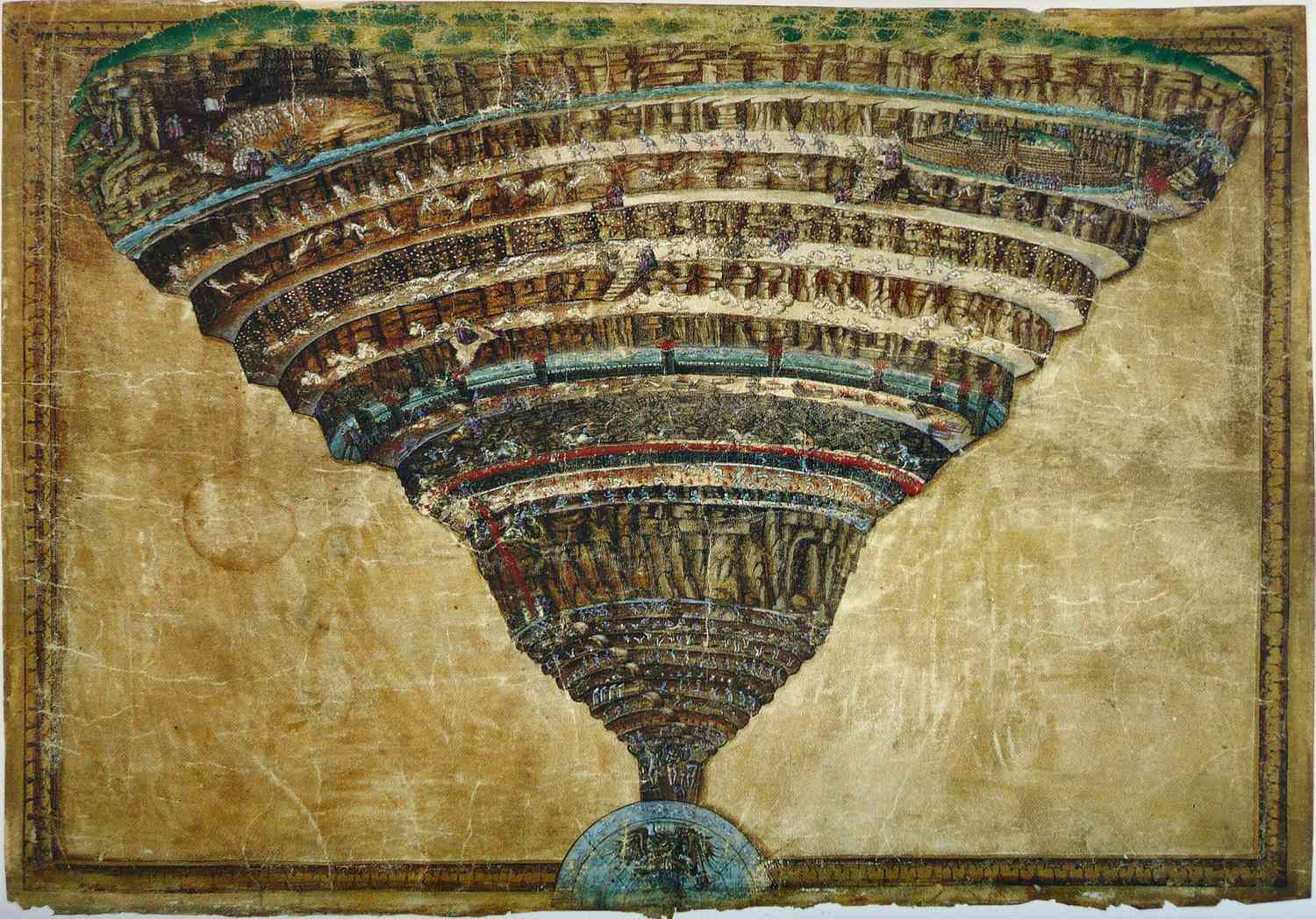
It’s this latter conception, of Tartarus as an awesomely deep vertical shaft within the earth, that Virgil and, by way of him, Dante appropriated for their matryoshka variations on, and enlargements of, the νέκυια depicted in the Odyssey, Book XI. These textual recapitulations, with the intent of re-contextualizing the Homeric underworld – thereby asserting primacy over successive poetical forebears while claiming their accumulated inheritance – exemplify, in some sense, the logic of Tartarus itself. For it isn’t just a pit. It’s a prison, whose prisoners are occasionally released – or, more precisely, jailbroken – to help topple a prevailing order. By “order” I mean the supersessions of Space by Time by Electromagnetism (ahem, I mean Ouranos by Kronos by Zeus), yes, but also of Greece by Rome by Christianized Europe, and many other sorts of pseudo-replacement – up to and including that of Neanderthals by modern humans.
Tartarus is a pressurized wellspring of such successions, of welling ups to overturn – some of which succeeded; others, were merely attempted. At bottom, it’s always the worst – Lucifer, most recently: a distribution of offenders that corresponds to gravitational differentiation during planetary formation. Weightier sins sink toward the center. Treason against god, in such schemata, being the basest metal. All the rest – despite their various rebellions having occurred sequentially, historically – remain, in cross-section, present, simultaneous, atemporal.

As with myth, so with metaphysics (and geology). Tartarus is as much a principle as it is a pit. A principle of under-the-groundness – of absence-of-groundness, even – with all the obvious ontological and geological implications thus imbricated. Its fundamental association with convective successions of orders of gods, from Kronos to Christ, combined with this under-the-groundness, makes it look a teensy bit, squinted at through the wrong end of hindsight’s telescope, like an intuition of stratigraphy: a logic of stone embedded in a mythographic matrix.
And of much else, perhaps. Remember: the prisoners of Tartarus are – or were, initially – the children of Gaia (i.e., of Earth), sired by Tartarus itself – that is, by an underness or absence of ground; or else by Ouranos – by cosmos, by withoutness. And what are these children of Earth? Giants. Seething, smoking, smashing, snake-furred, colossal boulder-hurling beings – be they Titans or Typhons, Cyclopes, Hecatoncheires, or whatever else. They’re down there in the pit, monstrous, enraged, awaiting their turn to vomit forth and war against the prevailing order. They are magma chambers. They are seismic swarms. Fumeroles, ripped in their dam’s flesh, stink of sulphur from thunderbolt wounds.
Sound familiar?
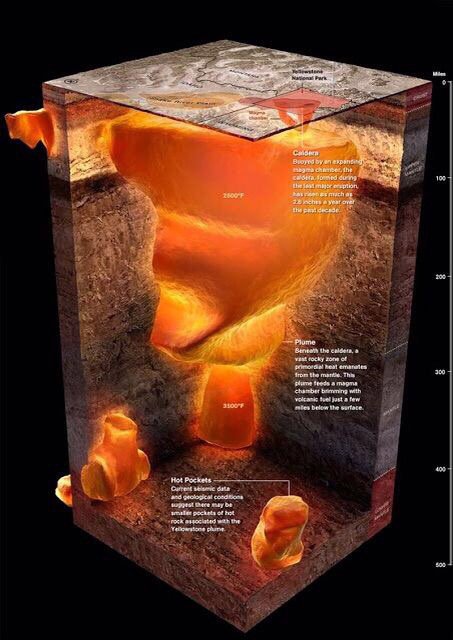
My point being: these agitated subterranean earth-bodies are enchained at the bottom of an enormous tube that reaches the shallow subsurface. Age after age, their matter, as materiel, is brought up through this plumbing to combat an order which, once defeated, gets cast down into the depths of the earth while a new order is established at the surface and atmospherically.
In this sense, we aren’t just dealing with a theory of history or epistemology (although it is also those), but of tectonism: an ancient intuition of at least some of what James Hutton would articulate twenty-five hundred years later in his 1788 Theory of the Earth.
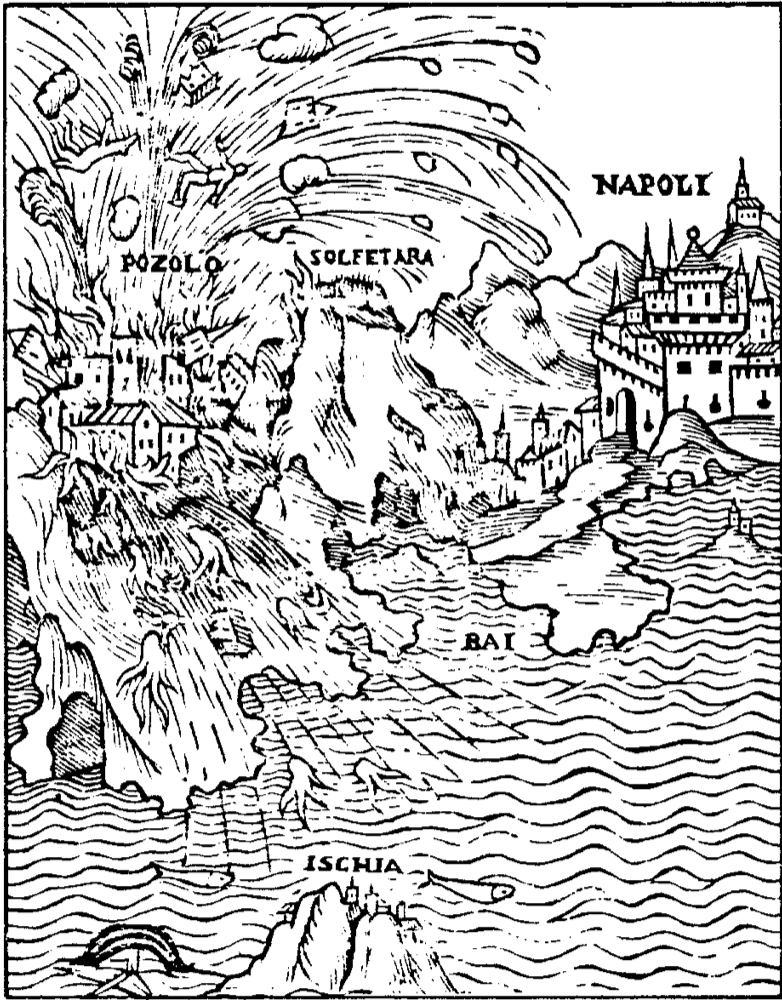
*
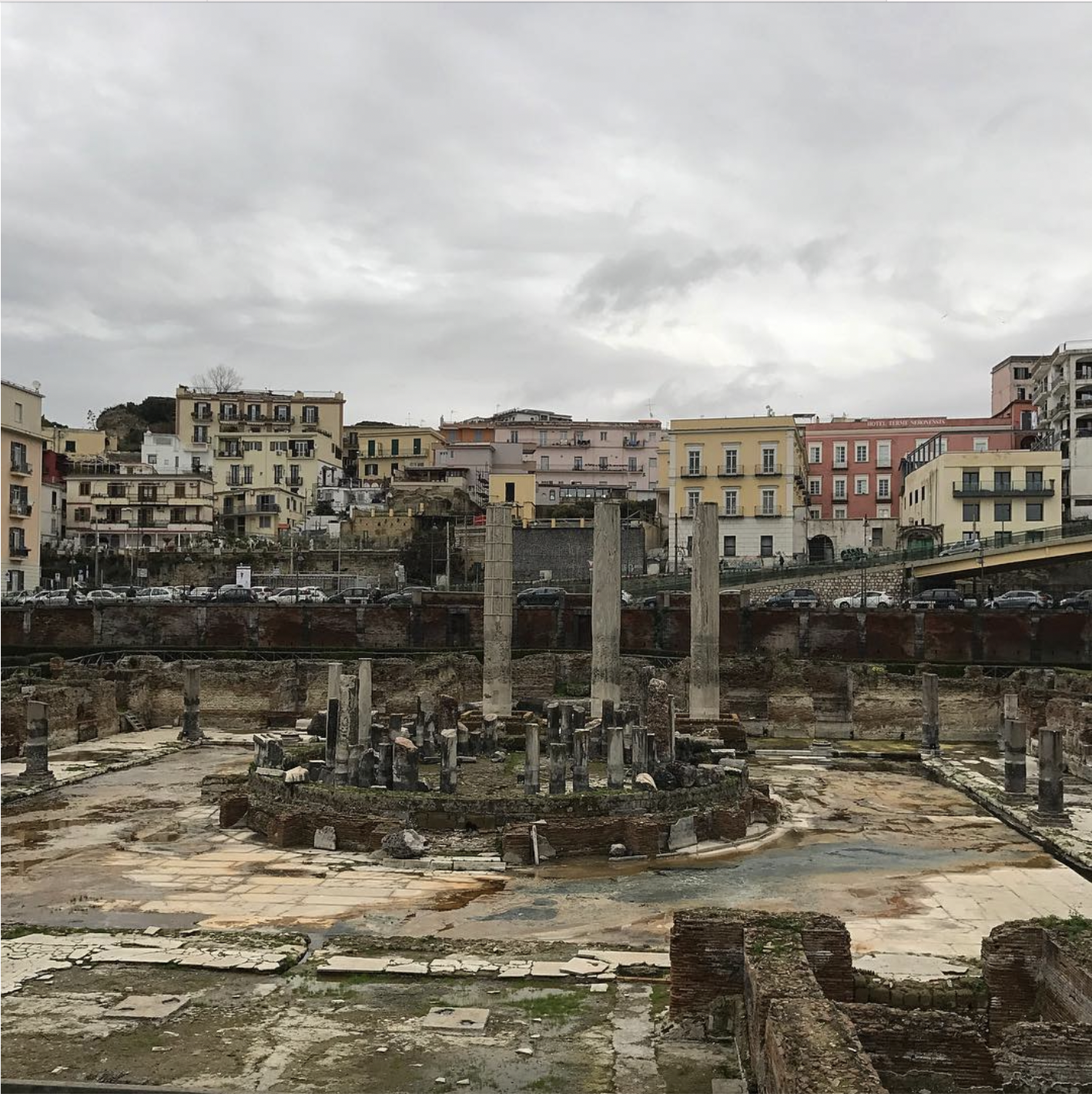
The Macellum of Pozzuoli, long misidentified as the temple of Serapis, and famously depicted in the frontispiece of Charles Lyell’s Principles of Geology. This is how bradyseism (by which the earth gradually rises or falls as subsurface magma chambers fill and empty) was first explained. Arturo Issel is credited with coining the term, but it was Charles Babbage who first puzzled it out in a privately printed 1847 report entitled Observations on the Temple of Serapis at Pozzuoli Near Naples with an Attempt to Explain the Causes of the Frequent Elevation and Depression of Large Portions of the Earth’s Surface in Remote Periods, and to Prove that Those Causes Continue in Action at the Present Time. With a Supplement: Conjectures on the Physical Condition of the Surface of the Moon. I recommend reading it cover to cover. My sense is that I’d have loved to meet up with Babbage for drinks, but would have hated to go hiking with him.
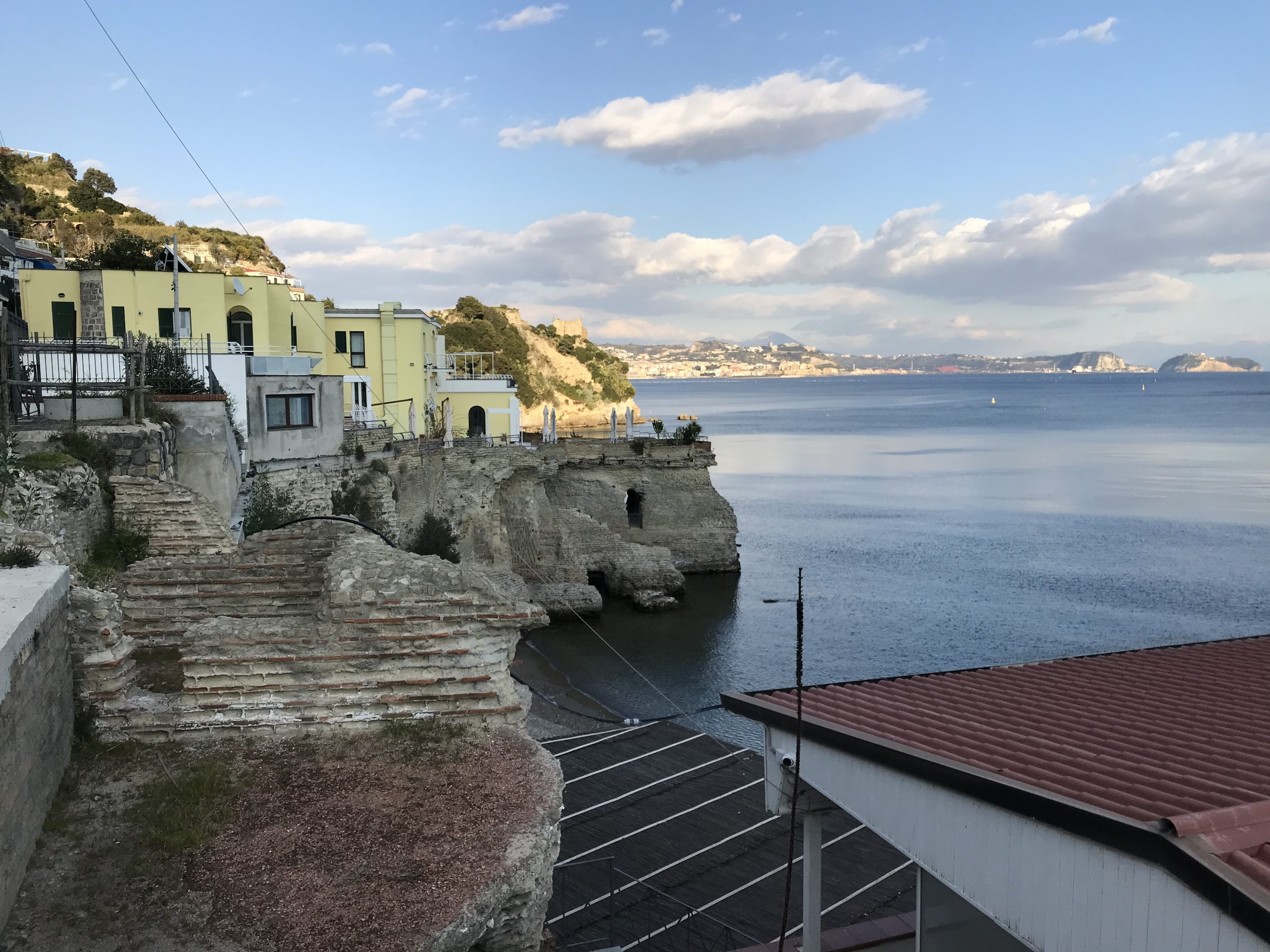
Bradyseism drowned the ancient resort town of Baiae. Hence the irretrievable play on Baia/bay in the Italian version of a poem by Joseph Brodsky I recollected while walking back from Capo Miseno – from which Pliny the Elder rowed out to mount his fateful rescue operation at Stabiae while his nephew stayed home, claiming he had too much homework – toward the crater of the newest mountain in Europe – to Monte Nuovo this past Spring:
Procida
Baia sperduta: non più di venti barche a vela.
Reti, parenti dei lenzuoli, stese ad asciugare.
Tramonto. I vecchi guardano la partita al bar.
La cala azzurra prova a farsi turchina.
Un gabbiano artiglia l’orizzonte prima
che si rapprenda. Dopo le otto è deserto
il lungomare. Il blu irrompe nel confine
oltre il quale prende fuoco la stella
I don’t know if there’s already an English translation, but this is, more or less, what I hear in my head when I read those lines:
Procida
Lost Baia/bay: no more than twenty ships at sail.
Nets, related to sheets, hang to dry.
Sunset. Old guys watch the match at the bar.
The blue cove tries for darker blue.
A seagull claws the horizon
before it coagulates. After eight,
the seafront is deserted. Blue breaks the confine
beyond which a star catches fire.
I’d plumb forgotten that I stole Brodsky’s seagull for a postcard poem of my own twenty-(very)-odd years ago, written at Oak Harbor on Whidbey Island in the wake of a terrible automobile accident. Not that it matters, except as evidence that memory too is subject to Bradyseism.
A harbor where the dryads dwell
among the roots of an enormous Tour Eiffel
of oak. A pristine,
upturned palm of aquamarine
upon which ships unfurl their sails and reverse a
course toward home, reflecting clouds, and vice versa.
At or around eight,
an aeroplane, or seagull, pierces the horizon—whose failure to coagulate,
as one’s shadow is cast like a net,
crimsons the surf at his feet and produces a sunset.
**

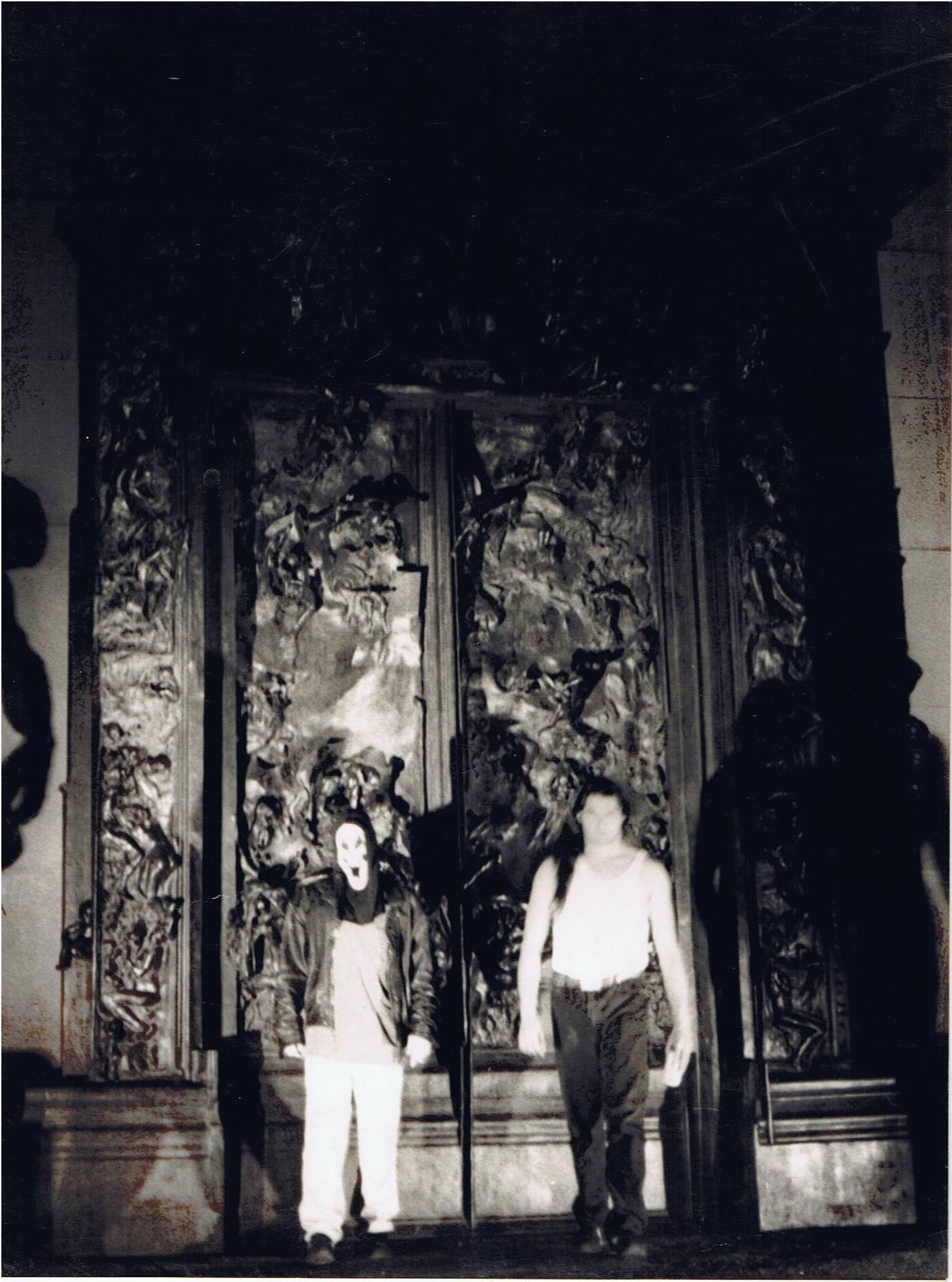
The gates of hell are open night and day;
Smooth the descent, and easy is the way:
But to return, and view the cheerful skies,
In this the task and mighty labor lies.
Virgil, Aeneid
If it wasn’t Joseph Brodsky who wrote, “Some doors are only good for one’s getting out,” then it was me, imitating him.
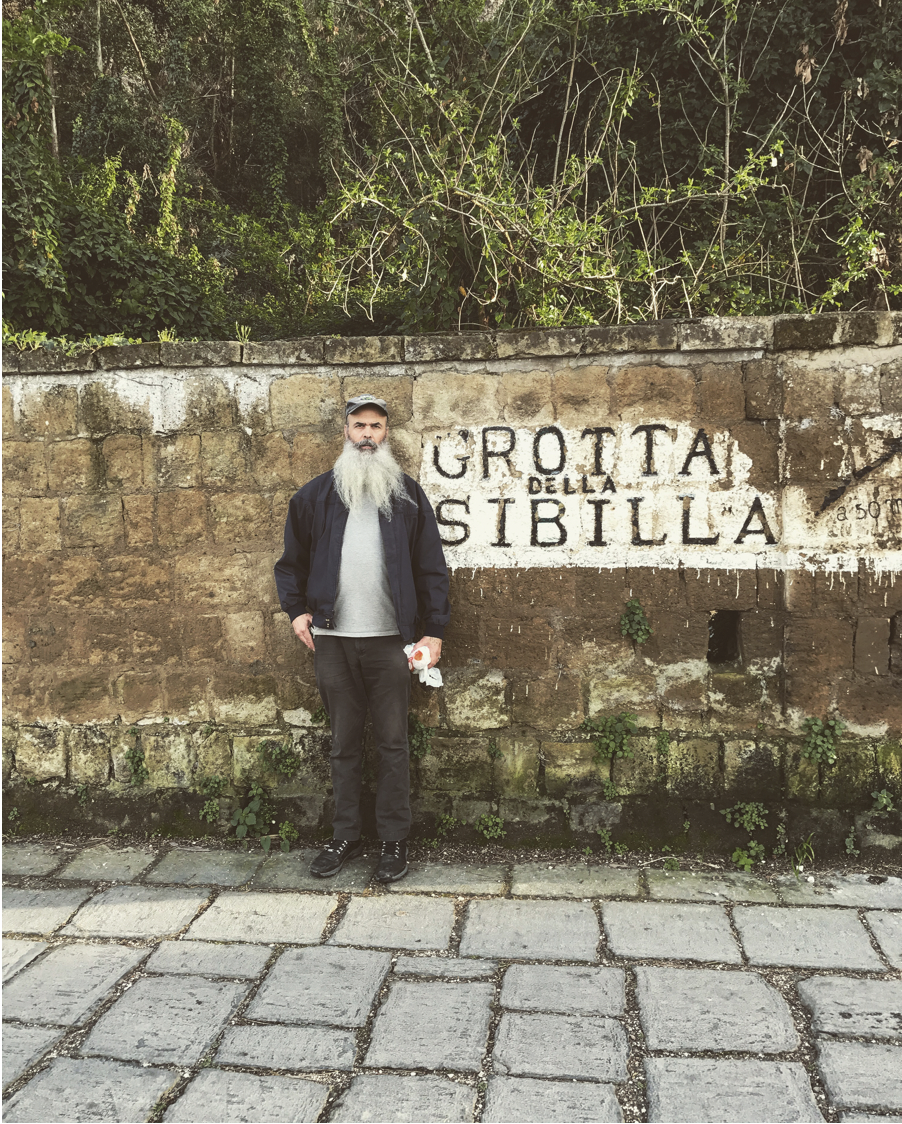
On the far shore of Lake Avernus from where I lived in my adolescence, you can still pay visit to the portal through which the Cumaean oracle is supposed to have led Aeneas into the underworld. It’s actually one end of a military tunnel Agrippa had built between Avernus and Lake Lucrino during the civil war. Even so, local tradition puts the entrance to Hades – specifically, access to the shore of Styx – down one of its flooded stone stairwells; and the chamber of an even more ancient – Cimmerian**** – Sibyl down another. Unfortunately, thousands of years of bradyseism and extrusive volcanism have fucked the subterranean complex up beyond ancient recognition.
Given all the intertextual echoes, this should also be the gate that Virgil led Dante down through. As you can see in the image below, it’s somewhat more modest than the Rodin. My attempts to find “Lasciate ogni speranza, voi ch’entrate” inscribed on the rock above the portal were in vain, but I wouldn’t put it past a local to have sledgehammered it off and put it up over their waterbed.
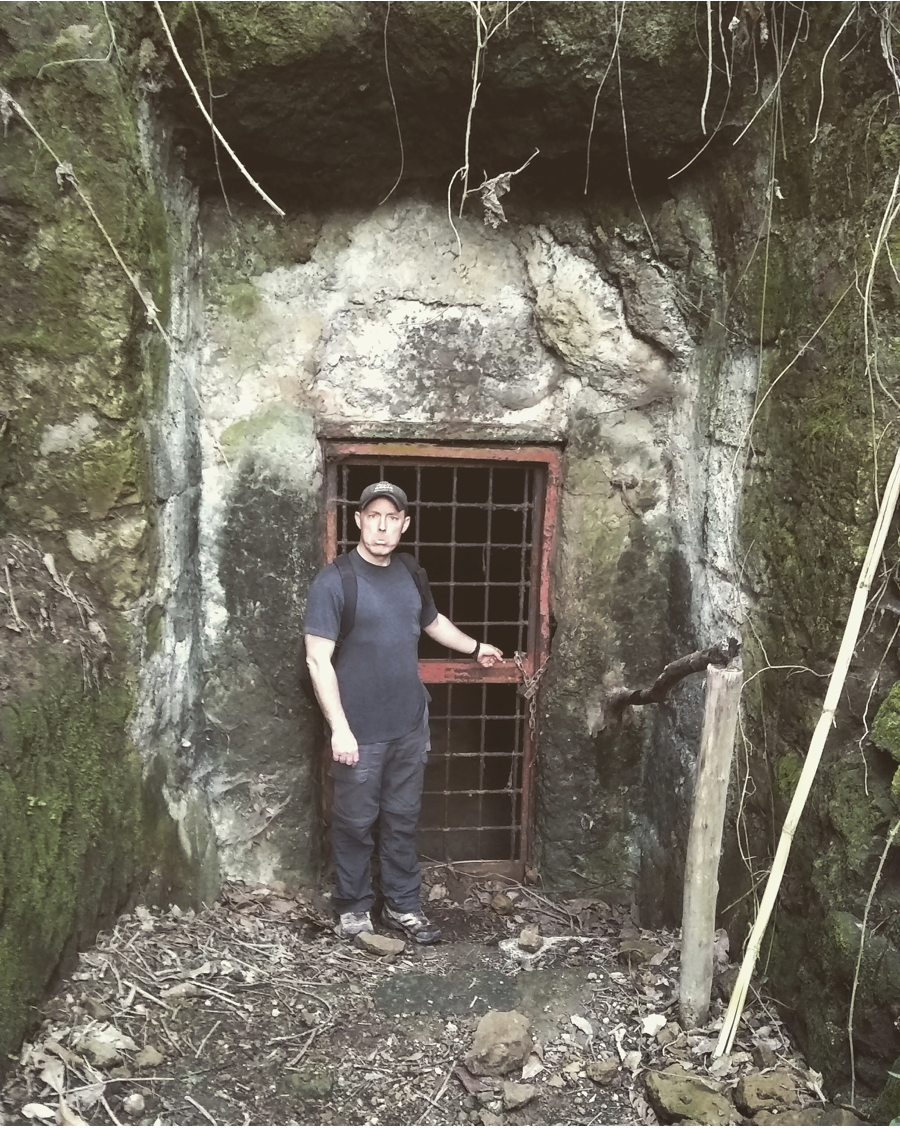
Throwing out the bottom lip here in a Mr. Pitiful because despite what Virgil says about the gate of Dis always standing open, it’s actually padlocked these days. For this reason, I decided to name my bolt cutters “The Golden Bough”
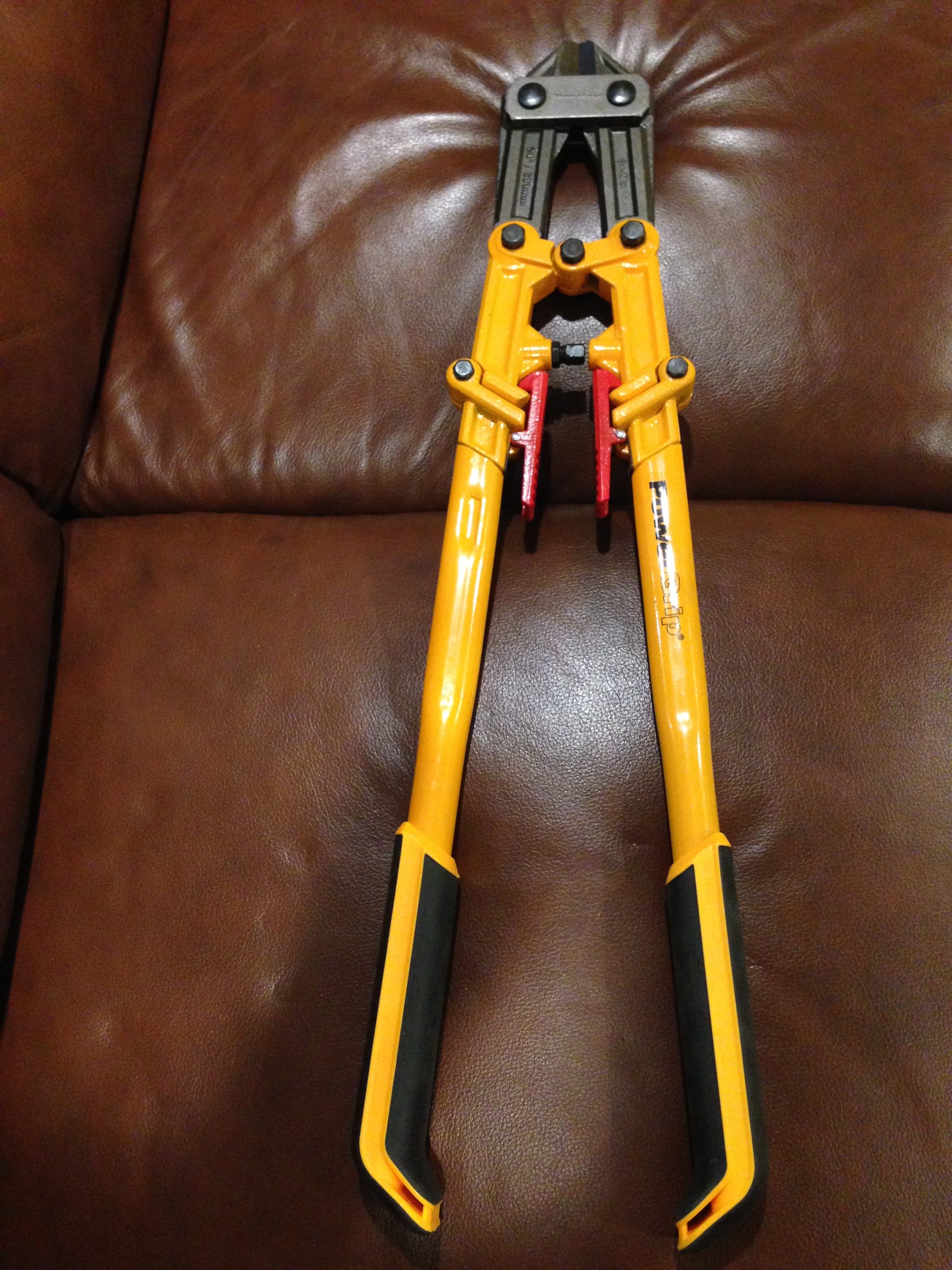
***Depth estimates of the Tartarus pit vary significantly. In Book VI of the Aeneid, Virgil claims it is twice as deep as Olympus appears tall. Which would make it either 5834 meters or 4706 meters deep, depending on whether you double the true height of the mountain or its prominence. Hesiod’s assertion is more complicated to calculate. And would seem to necessitate a larger planetary diameter than the one upon which I’m writing this possesses.
****
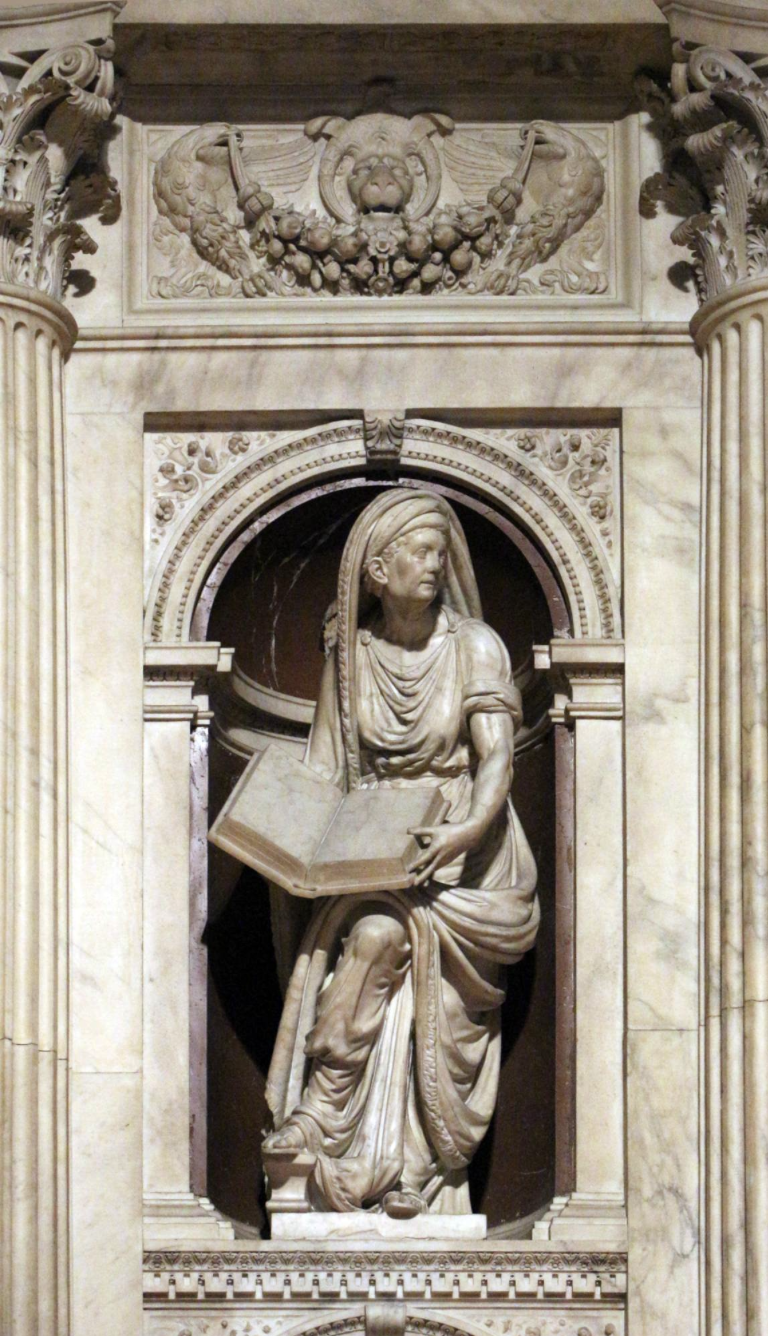
Came we then to the bounds of deepest water,
To the Kimmerian lands…
There is a curious passage in Book V of Strabo’s Geography:
Ephorus, in the passage where he claims the locality in question for the Cimmerians, says: They live in underground houses, which they call “argillae,” and it is through tunnels that they visit one another, back and forth, and also admit strangers to the oracle, which is situated far beneath the earth; and they live on what they get from mining, and from those who consult the oracle, and from the king of the country, who has appointed them fixed allowances; and those who live about the oracle have an ancestral custom, that no one should see the sun, but should go outside the caverns only during the night; and it is for this reason that the poet speaks of them as follows: “And never does the shining sun look upon them”; but later on the Cimmerians were destroyed by a certain king, because the response of the oracle did not turn out in his favour; the seat of the oracle, however, still endures, although it has been removed to another place.
What are we to make of this? Ephorus and Strabo knew very well the Cimmerians – whether or not, two thousand years ago, “Cimmeria” referred to the Crimean peninsula – were a people of the Pontic-Caspian steppe along the Black Sea. Strabo says as much elsewhere in the Geography. So what’s this business of them digging into the volcanic landscape of Campi Flegrei to establish a troglodytic oracular complex either at Avernus (in a geomorphological – and archaeological, alas – regime that was subsequently overwritten by the eruption of Monte Nuovo) or else within the nearby Monte Gauro crater complex (from the slopes of which, 15th c Neapolitan historian Scipione Mazzella claimed in his Sito et antichità della città di Pozzuoli, Christ descended to enter hell for his Easter harrowing through the portal at Lake Avernus). And did the destruction of this Cimmerium by some prehistoric king cause the Sibylline oracle to be re-founded at Cumae?*****
While there certainly is archaeological evidence of Iron, and even Bronze, Age inhabitations of the Campi Flegrei that preceded Euboean colonization (given tombs near Paestum dating back to 2800 BC, it’s hardly inconceivable that the Guado culture might have extended as far north as Cumae), a.) I’m not aware of any that decisively points to the influx of a Crimean migrant/refugee population and b.) Lake Avernus fills the crater of a volcano that erupted approximately four thousand years ago, which is something to consider when testing Marija Gimbutas-like hypotheses of prehistoric migration. But if that is what happened – or even if that’s just what supposedly happened – it would help explain certain details in Book VI of the Aeneid (to do with Hekate Trivia [the og trinity], etc.) and weld the geography of Homer’s Necyia to that of the katabasis of Aeneas in a way that should matter to Danteists. Except for the fact that, prior to 38 BC, the slopes of the Avernus crater “were thickly covered with a wild and untrodden forest of large trees” (i.e., a ‘forest dark’) that Agrippa had clear-cut so his contractor Lucius Cocceius Auctus could build logistics tunnels and canals more easily, I’ll say no more.
*****God speaks in hydrocarbons. In a region as volcanically active as the Campi Flegrei it’s not totally surprising that multiple Sibyls would spring up like fruiting bodies from the same fault rhizome. More so, I think, if they had operated contemporaneously; less if one Sibyl was forced to shutter – for whatever reason (e.g., a ruler homicidally displeased with an unfavorable oracle; or ongoing seismicity shutting off the pneuma in one spot and venting it elsewhere nearby) – before another hung her shingle.
ALSO SEE: Wayne Chambliss on RADIOACTIVE TRINITITE | THE RIDE-ALONG | MATRYOSHKA CHEST. Tom Nealon on JENSON’S ROMAN | GARUM | POSCA. Joshua Glenn on BEASTLY NUISANCE (ARGONAUTICA) | James Parker’s bastardizations of THE KALEVALA | Matthew Battles on ALDINE ITALIC | Toby Ferris on ANATOMY OF NORBITON: AETIOLOGICAL | Flourish Klink on THE LIFE AND DEATH OF PATROCLUS SON OF MENOETIUS | Gordon Dahlquist on FELLINI SATYRICON.
